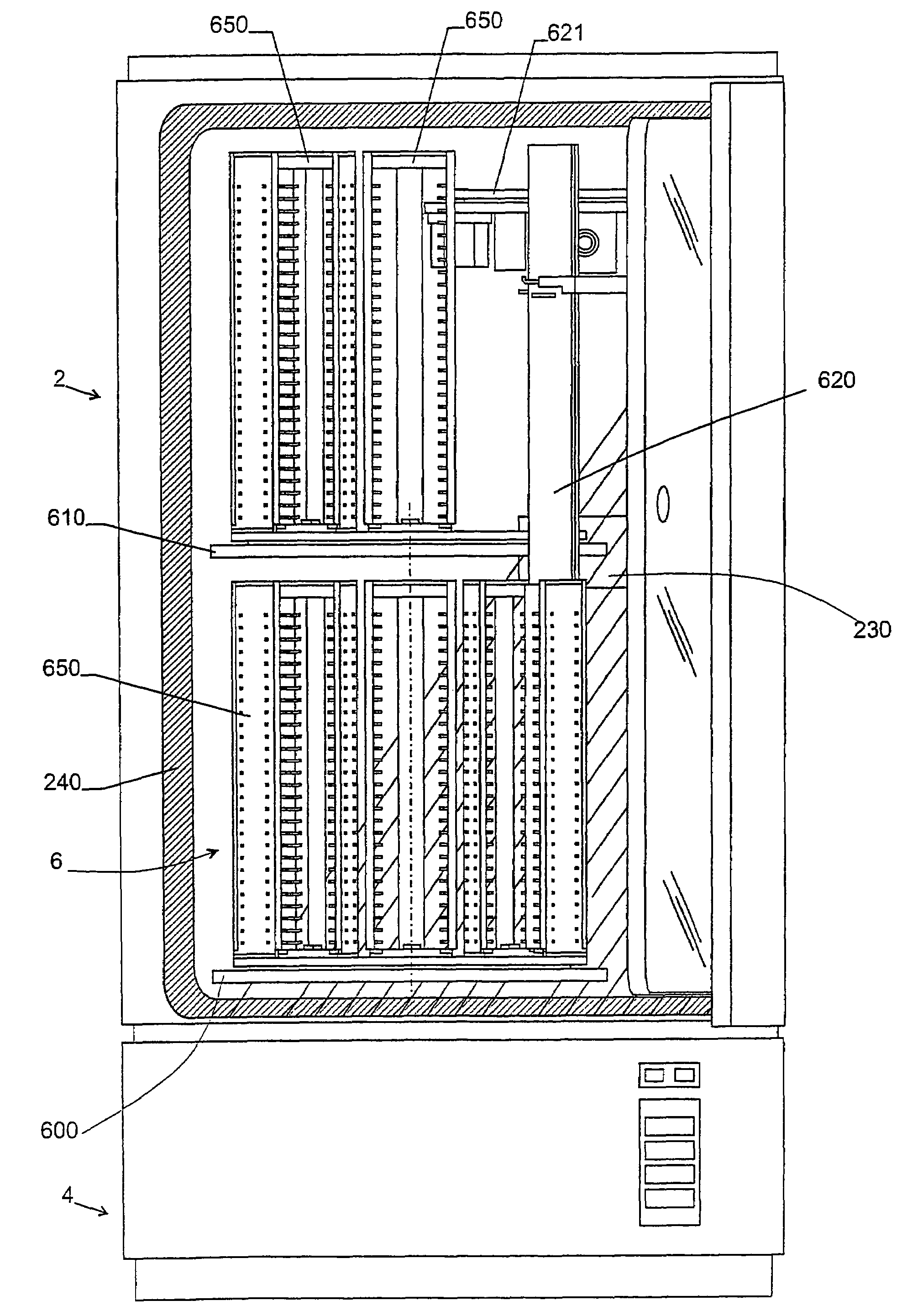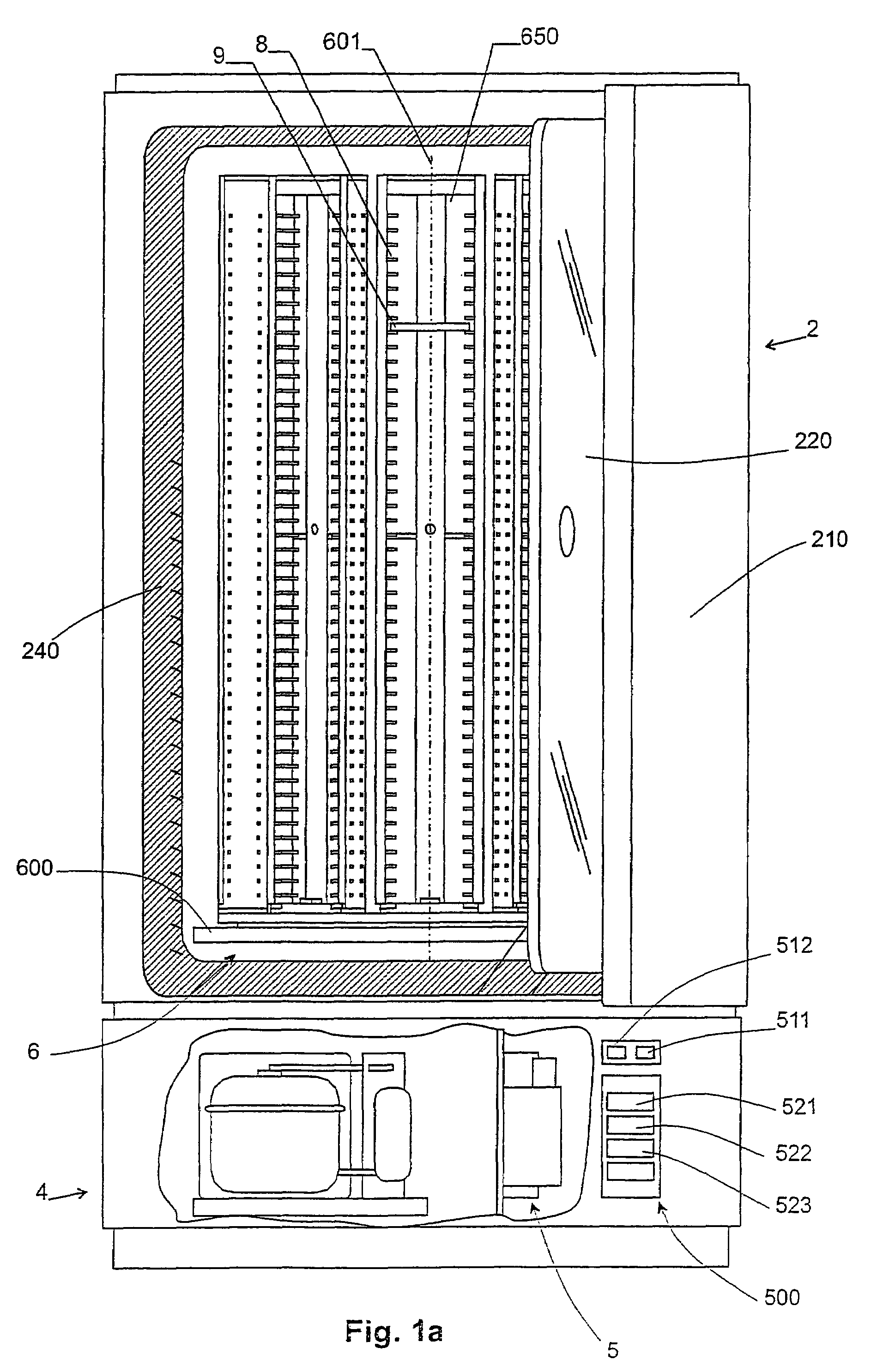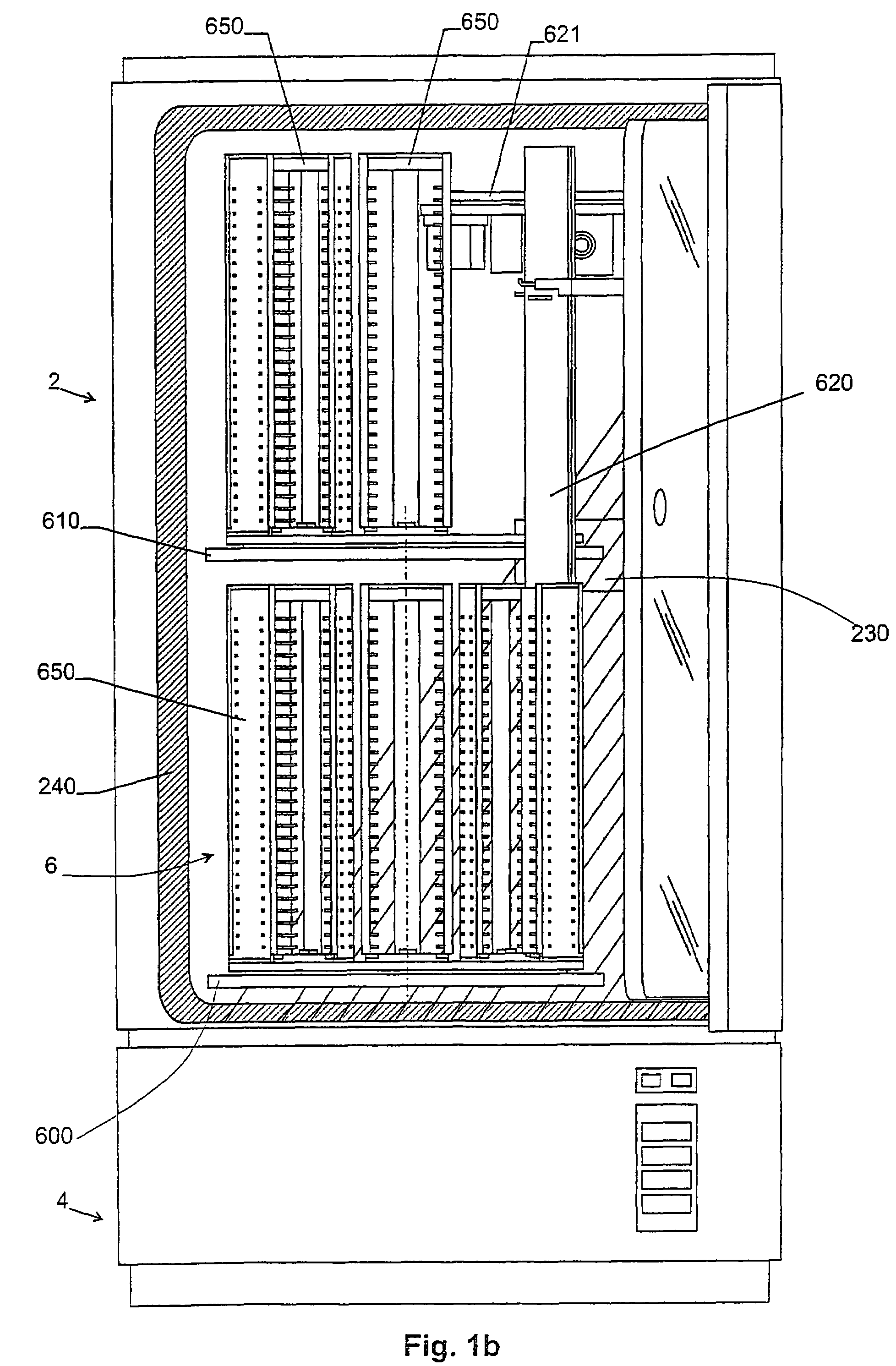Air-conditioned storage cupboard
a technology of air-conditioning storage cabinets and storage cabinets, which is applied in the direction of material testing goods, biochemistry equipment and processes, biochemistry apparatus, etc., can solve the problems of inability to maintain the desired temperature, the value of the objects stored in the storage system is extremely high, and the cost of the whole system can be a multiple of the cost of the whole system,
- Summary
- Abstract
- Description
- Claims
- Application Information
AI Technical Summary
Benefits of technology
Problems solved by technology
Method used
Image
Examples
Embodiment Construction
[0045]Common to all embodiments of the climate controlled cabinet shown here the climate controlled cabinet comprises a climate controlled chamber 2 and a control chamber 4.
[0046]A plurality of storage-positions 8 for the objects 9 to be stored are provided in climate controlled chamber 2. It has an outer and an inner user door 210 and 220, respectively, at the front side and an auxiliary door 15 at the back side. The user doors 210, 220 serve for manual access to the interior of climate controlled chamber 2. Outer user door 210 is thermally insulated and non-transparent, the inner user door has a transparent, thermally insulated double glazing. Within climate controlled chamber 2, a handling device 620 is arranged for automatically transporting the objects between the storage positions and a transfer position outside the climate controlled cabinet, for which purpose auxiliary door 15 is used.
[0047]A controller as well as various apparatus 5 for generating heat, cold and / or controll...
PUM
| Property | Measurement | Unit |
|---|---|---|
| temperatures | aaaaa | aaaaa |
| temperatures | aaaaa | aaaaa |
| temperature | aaaaa | aaaaa |
Abstract
Description
Claims
Application Information
 Login to View More
Login to View More - R&D
- Intellectual Property
- Life Sciences
- Materials
- Tech Scout
- Unparalleled Data Quality
- Higher Quality Content
- 60% Fewer Hallucinations
Browse by: Latest US Patents, China's latest patents, Technical Efficacy Thesaurus, Application Domain, Technology Topic, Popular Technical Reports.
© 2025 PatSnap. All rights reserved.Legal|Privacy policy|Modern Slavery Act Transparency Statement|Sitemap|About US| Contact US: help@patsnap.com



